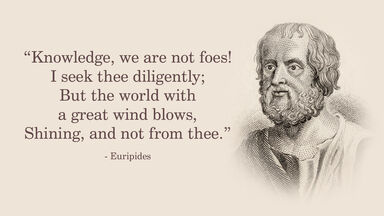By the aid of Apollo, who served him as a slave - either as a punishment for having slain the Cyclopes, or out of affection for his mortal master - he won the hand of Alcestis, the most beautiful of the daughters of Pelias, king of Iolcus.
His parents refused, but Alcestis consented.
Amongst the finest of his classical pictures were - "Syracusan Bride leading Wild Beasts in Procession to the Temple of Diana" (1866), "Venus disrobing for the Bath" (1867), "Electra at the Tomb of Agamemnon," and "Helios and Rhodos" (1869), "Hercules wrestling with Death for the Body of Alcestis" (1871), "Clytemnestra" (1874), "The Daphnephoria" (1876), "Nausicaa" (1878), "An Idyll" (1881), two lovers under a spreading oak listening to the piping of a shepherd and gazing on the rich plain below; "Phryne" (1882), a nude figure standing in the sun; "Cymon and Iphigenia" (1884), "Captive Andromache" (1888), now in the Manchester Art Gallery; with the "Last Watch of Hero" (1887), "The Bath of Psyche" (1890), now in the Chantrey Bequest collection; "The Garden of the Hesperides" (1892), "Perseus and Andromeda" and "The Return of Persephone," now in the Leeds Gallery (1891); and "Clytie," his last work (1896).
In the time of Photius the poets usually studied at school were Homer, Hesiod, Pindar; certain select plays of Aeschylus (Prometheus, Septem and Persae), Sophocles (Ajax, Electra and Oedipus Tyrannus), and Euripides (Hecuba, Orestes, Phoenissae, and, next to these, Alcestis, Andromache, Hippolytus, Medea, Rhesus, Troades,) also Aristophanes (beginning with the Plutus), Theocritus, Lycophron, and Dionysius Periegetes.
He translated the Alcestis of Euripides and three of the plays of Sophocles; and wrote two original tragedies, Jephte and Christo in Passione.
